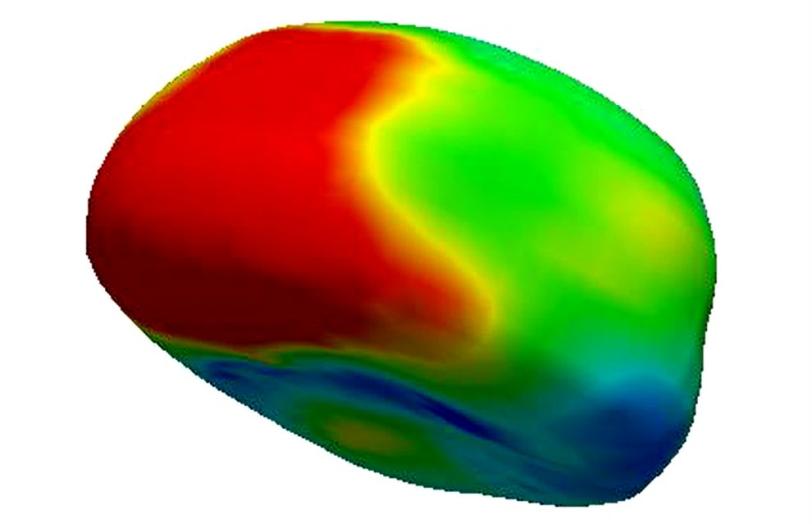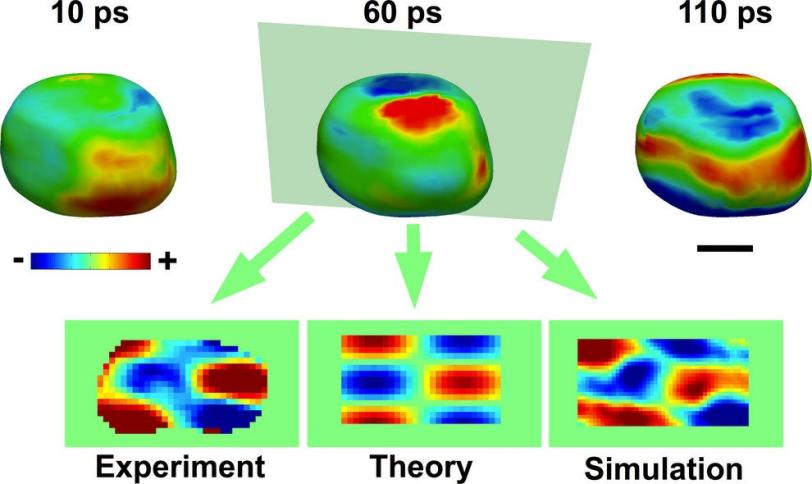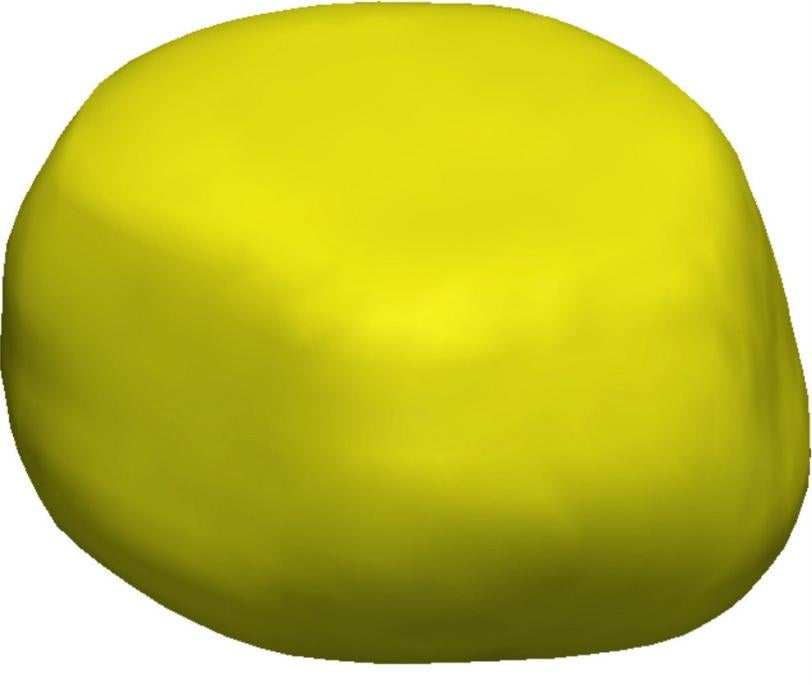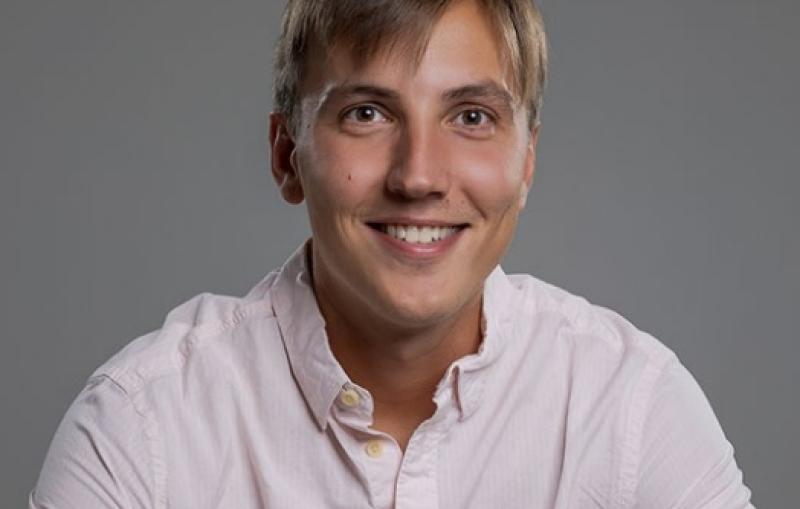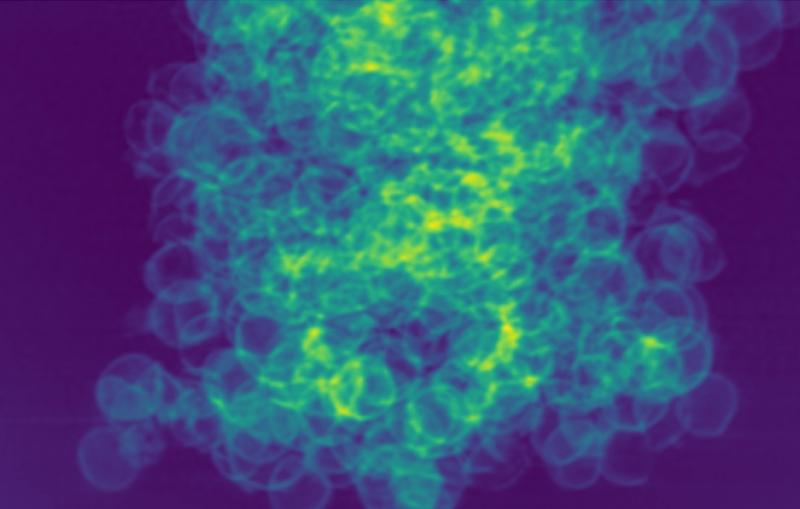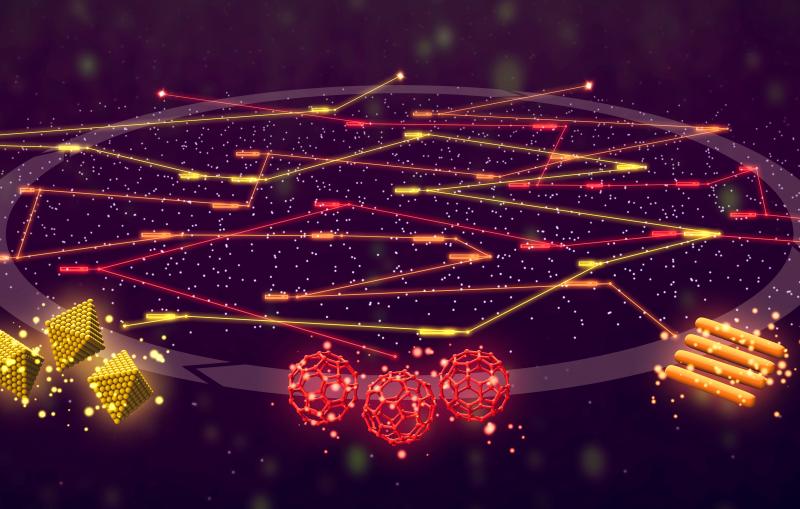X-ray Laser Brings Gold Exploration to the Nanoscale
Pushing gold exploration to the nanoscale, scientists used SLAC's Linac Coherent Light Source X-ray laser to produce a series of 3-D images that detail a ringing effect in tiny gold crystals.
By Glenn Roberts Jr.
Pushing gold exploration to the nanoscale, scientists used SLAC's Linac Coherent Light Source X-ray laser to produce a series of 3-D images that detail a ringing effect in tiny gold crystals. The technique provides a unique window for studying why smaller is better for some specialized materials, including those used in chemical reactions and electronic components, for example.
The researchers triggered acoustic vibrations in the gold nanocrystals, which measured just 300-400 nanometers in diameter, using infrared laser pulses, and then studied areas of contraction and expansion caused by this ringing with the ultrabright, ultrashort X-ray pulses produced by the LCLS.
They created 3-D movies of the distortions by compiling the series of images, which use color-coding to represent the distortions. The measured effects occurred within tens of trillionths of a second following the first laser pulses.
Such laser-excited distortions reveal key details about the atomic structure and properties of the crystals – and represent an important step in understanding why nanoscale crystals of some materials exhibit unique behavior and properties that are absent at larger scales.
"Looking at the excited states of individual nanoparticles over very short time scales, in three dimensions – that's completely new," said Jesse Clark, a postdoctoral research associate at University College London and lead author of a paper published May 23 in the journal Science that details the results of the experiment.
A particularly challenging aspect of the experiment was to capture multiple images from the same gold nanocrystals while avoiding damage from the ultrabright X-ray pulses, he said.
"We didn't even really know if it was going to be possible," Clark said.
At specific nanoscale sizes and geometries, some materials exhibit superior performance in stimulating chemical reactions and storing energy, making them prime candidates for a range of industrial uses. The methods used in the LCLS experiment, conducted in late 2011, should pave the way for studies using different types of samples, including materials that are more relevant for industrial applications, Clark said.
"The natural follow-on is to look at higher laser-excitation energies – to start to perturb the crystals a lot more, and to start to look at different and smaller samples," Clark said. "It has given us many more ideas and inspiration for future experiments."
Ian Robinson, a physics professor at University College London who served as principal investigator in the LCLS experiment, said the experiment's success represents an important step forward in precisely measuring the active states of nanocrystals at specific points in time.
Robinson has previously studied gold nanocrystals using synchrotrons including Argonne National Laboratory's Advanced Photon Source, and he noted that LCLS provided a unique view of the laser-excited vibrations in the samples.
"We can see things much faster and much smaller – several orders of magnitude improved," he said. "We can start to look at the questions: How do waves begin to form? How do vibrations start?" Robinson said future studies will focus on smaller crystals and processes that occur on even shorter time scales, down to quadrillionths of a second.
"Gold is a good test sample. The same experiment will work in other materials," he said. Potential candidates for future experiments are nanocrystals of platinum, which can drive a variety of chemical reactions, and nanocrystals of barium titanate, which multiply energy storage capacity in electronics. "Little bits of optimization of catalysts can go really far," Robinson noted.
Henrik Lemke, an LCLS staff scientist who participated in the nanocrystals experiment, said that while larger crystals have a larger volume of their interior space compared to their surface area, smaller crystals have a higher ratio of surface area that may make them "less dominated by what's happening inside," and will help scientists explore their unique properties and behavior at those scales.
Other researchers participating in the experiment were from the University of Oxford and the Research Complex at Harwell in the U.K., La Trobe University in Australia, and the Advanced Photon Source.
Contact
For questions or comments, contact the SLAC Office of Communications at communications@slac.stanford.edu.
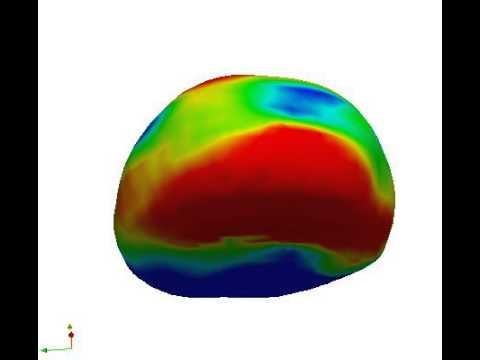
110A
